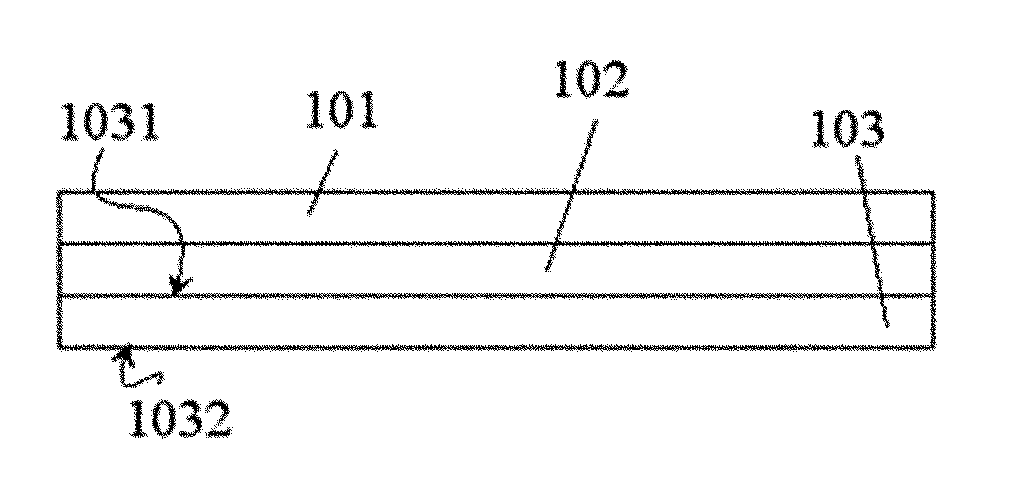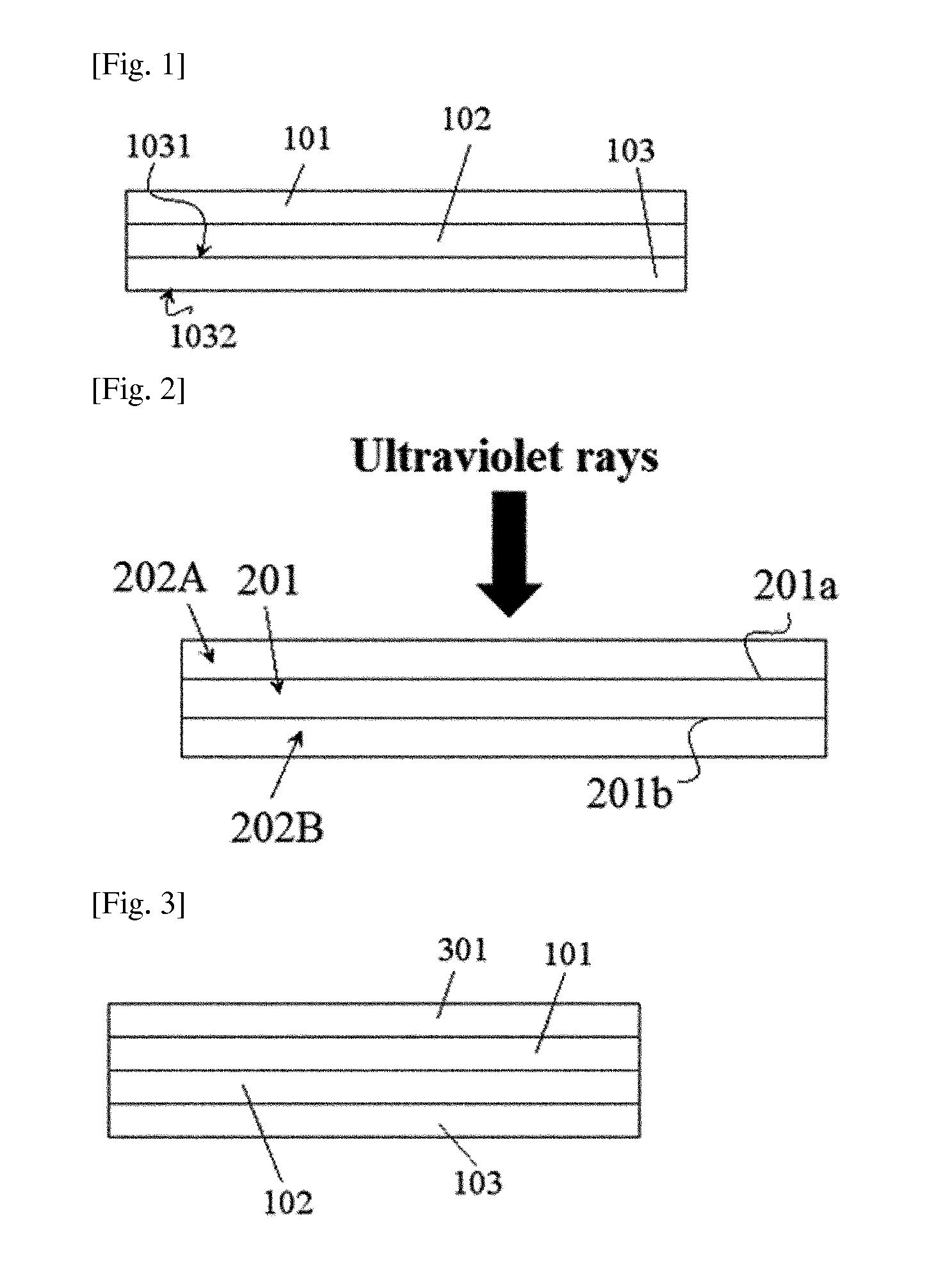Polarizing plate
a technology of polarizing plate and liquid crystal display device, which is applied in the direction of polarizing element, film/foil adhesive without carrier, instruments, etc., can solve the problems of degrading the optical characteristics of the polarizing plate, not easy to provide a polarizing plate that achieves the desired level of performance, and is generally susceptible to moisture, etc., to achieve enhanced cohesiveness and adhesive stability of pressure-sensitive adhesives, and prevent generation
- Summary
- Abstract
- Description
- Claims
- Application Information
AI Technical Summary
Benefits of technology
Problems solved by technology
Method used
Image
Examples
preparation example 1
Preparation of Acrylic Polymer (A)
[0166]90 parts by weight of n-butyl acrylate (n-BA), 12 parts by weight of methoxy ethyleneglycol acrylate (MEA) and 2 parts by weight of 2-hydroxyethyl acrylate (2-HEA) were put into a 1 L reaction vessel equipped with a cooling device to reflux a nitrogen gas and facilitate temperature control. Subsequently, 180 parts by weight of ethyl acetate (EAc) was put as a solvent into the reaction vessel and purged with the nitrogen gas for 60 minutes to remove oxygen. Afterward, the temperature was maintained at 60° C., 0.05 parts by weight of azobisisobutyronitrile (AIBN) was put as a reaction initiator into the reaction vessel, and the reaction was carried out for 8 hours. After the reaction, the reaction product was diluted with ethyl acetate (EAc), and thus an acrylic polymer (A) having a solid content of 30 wt %, a weight average molecular weight of 1,000,000, and a molecular weight distribution of 4.9 was prepared.
preparation example 2
Preparation of Acrylic Polymer (B)
[0167]An acrylic polymer was prepared by the same method as described in Preparation Example 1, except that 90 parts by weight of n-butyl acrylate (n-BA), 13 parts by weight of methoxy ethyleneglycol acrylate (MEA), 2 parts by weight of 2-hydroxyethyl acrylate (2-HEA), and 0.5 parts by weight of acrylic acid (AA) were put into the reaction vessel.
preparation example 3
Preparation of Acrylic Polymer (C)
[0168]An acrylic polymer was prepared by the same method as described in Preparation Example 1, except that 90 parts by weight of n-butyl acrylate (n-BA), 15 parts by weight of methoxy ethyleneglycol acrylate (MEA), and 2 parts by weight of 2-hydroxyethyl acrylate (2-HEA) were put into the reaction vessel.
PUM
| Property | Measurement | Unit |
|---|---|---|
| temperature | aaaaa | aaaaa |
| temperature | aaaaa | aaaaa |
| temperature | aaaaa | aaaaa |
Abstract
Description
Claims
Application Information
 Login to View More
Login to View More - R&D
- Intellectual Property
- Life Sciences
- Materials
- Tech Scout
- Unparalleled Data Quality
- Higher Quality Content
- 60% Fewer Hallucinations
Browse by: Latest US Patents, China's latest patents, Technical Efficacy Thesaurus, Application Domain, Technology Topic, Popular Technical Reports.
© 2025 PatSnap. All rights reserved.Legal|Privacy policy|Modern Slavery Act Transparency Statement|Sitemap|About US| Contact US: help@patsnap.com



